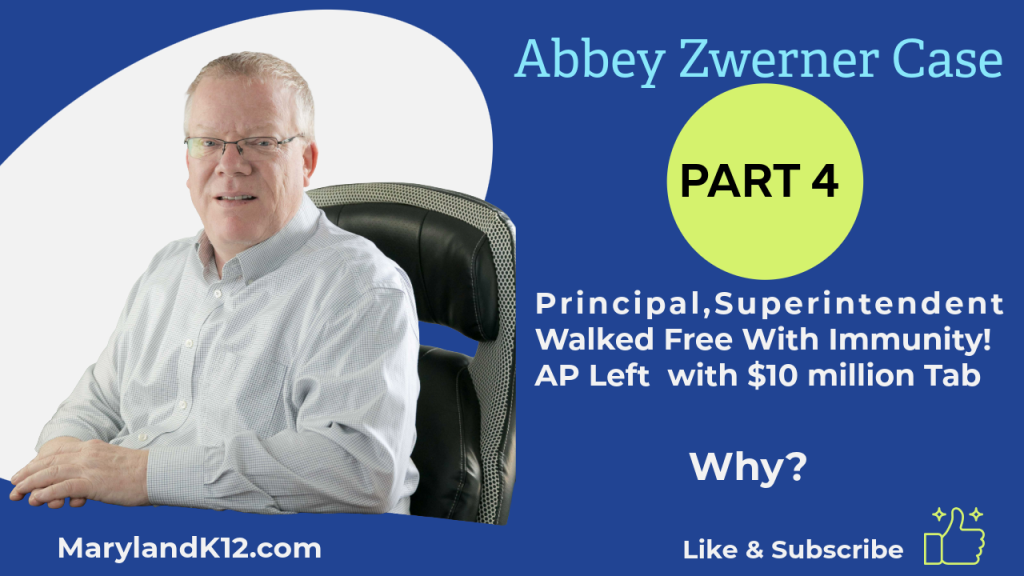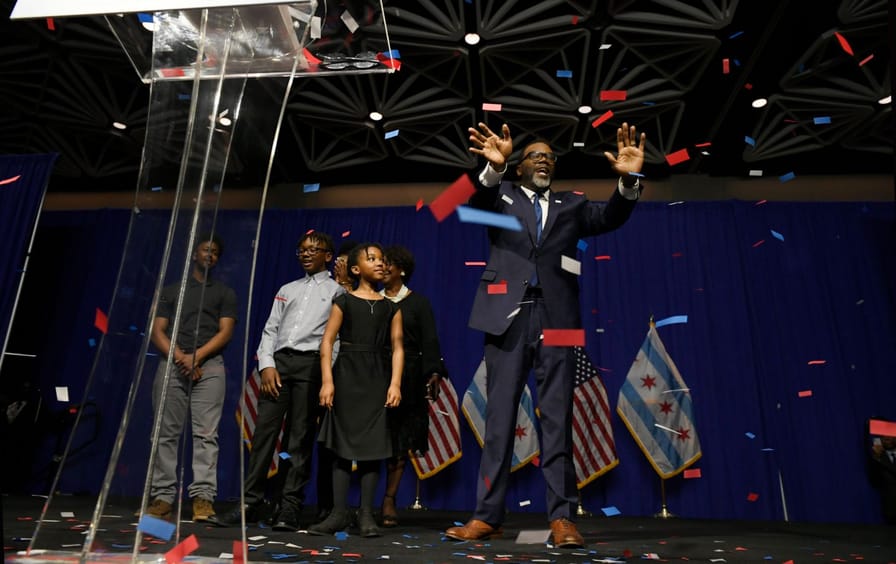

Republicans Have a Favorite New Tool to Destroy Public Schools
For Pamela Lang, a realtor in the Phoenix area whose son developed learning disabilities after surviving a typically fatal brain tumor at nine months, it seemed like a dream come true. Lang was unhappy with the special education accommodations at her son’s local public school, and now Arizona was offering more than $30,000 in a private bank account to cover the cost of private education.
The money was part of the state’s Empowerment Scholarship Account program (ESA), in which Arizona hands cash to qualifying families so that they can leave the public school system if they want. And Lang was getting much more than the $6,000–$9,000 that families typically received. It felt like she’d hit the jackpot. Now her son could get the education he deserved. She leapt at the opportunity, withdrawing her son from the local school district early in his fourth-grade year.
Lang quickly discovered that she had been offered a poisoned chalice. Unlike public schools, private schools were under no obligation to admit her son—and a long string of them refused to do so.
“I thought the ESA was going to be like a golden ticket—he’s going to get what he needs,” Lang said. But “there was a long period after we left public school and on ESA where he was rejected left and right from all these schools.”
Even when Lang managed to place him in a school, lax expulsion policies and poor oversight within the private school system meant that there was no guarantee that he would last the full school year. A Catholic school rescinded her son’s admission offer after just one day, and at a school for children with special needs, her son’s teacher often sent him out of class to sit with a computer by the receptionist’s desk rather than accommodate him. Because of the constant rejections, Lang’s son was unable to attend school full-time for two years, during which he only had a private tutor.
Millions of students across the country could soon find themselves subjected to the same treatment as Pamela Lang’s son. Across America, ESAs—which are usually known as “education savings accounts”—are becoming the latest weapon in the school privatization movement’s economic war on public schools.
ESAs are state-funded bank accounts that typically hold some portion of the per-student public education cost, which parents can spend on an alternative to public school, whether that be on tuition at a private or religious school, homeschooling materials, or private tutors. If that sounds like a school voucher program, that’s because it more or less is, only it gives parents more latitude in determining how the funds are spent. While vouchers are often limited to a select number of participating schools, ESA funds are not tied to any particular institution and can be spent on a much wider range of private instruction options at parents’ discretion.
Popular
“swipe left below to view more authors”Swipe →
-
Confessions of a McKinsey Whistleblower
Confessions of a McKinsey Whistleblower
-
The New Colonialist Food Economy
The New Colonialist Food Economy
-
Mitt Romney’s Lonely Exit
Mitt Romney’s Lonely Exit
-
James Ho Wants to Be the Next Clarence Thomas
James Ho Wants to Be the Next Clarence Thomas
ESAs aren’t brand new. Arizona, New Hampshire, Indiana, and Tennessee have all launched ESA programs over the past dozen years. But the movement is now exploding in popularity. In contrast with previous iterations of the program, which tended to target low-income families or students with disabilities, many of these new ESA programs expand their eligibility requirements far more broadly, with the ultimate aim of creating a “universal school choice” system.
In January, Iowa Governor Kim Reynolds signed an ESA bill into law that will provide any family in the state up to $7,598 to put toward private education. That same month, Utah passed a bill that will create $8,000 “Utah Fits All” scholarships for families taking their children out of public school. And just last week, Florida Governor Ron DeSantis signed a universal ESA bill that some analysts estimated could cost as much as $4 billion.
Similar programs have emerged as legislative priorities for Texas Governor Greg Abbott and Arkansas Governor Sarah Huckabee Sanders, and bills to either create or expand ESA programs are currently moving through at least a dozen other state legislatures, including those of Louisiana, Nebraska, New Mexico, and Illinois.
Supporters of school choice policies tout the flexibility that vouchers and ESAs allow, often describing the process as putting a child’s public education funding in a “backpack” that they can carry to a school best suited to their needs and preferences (increasingly, that means taking kids out of public schools deemed too “woke”). But the pithy slogans emphasizing freedom and choice mask many problems with these programs, with disastrous consequences for individual students and the public school system as a whole. To see what “universal school choice” really means, families in the states that have passed or are preparing to pass ESA laws can look to Arizona for a glimpse into the future. They might not like what they see.
“What we’re seeing is states trying to ram [ESA programs] through and holding up Arizona as the shining example,” said Beth Lewis, executive director of Save our Schools Arizona, a grassroots group mobilizing against the policy. “And they’re trying to do it fast because the realities of the horrific rollout here in Arizona are going to become evident very quickly.”
In 2011, Arizona became the first state to pass an ESA program, albeit one more narrowly tailored to children with special needs, in low-performing schools, in foster care, or living on a Native American reservation. If a family decided to take advantage of the Empowerment Scholarship Account, they would sign an agreement to withdraw their child from the public school system and then receive quarterly deposits for up to 90 percent of the base amount that the state would have spent on that student in the public schools. Depending on the student’s disability status, certain families could also qualify for additional funding.
The program was set to be expanded in 2017 in order to open eligibility to all Arizona public school students, allowing an additional 5,500 to enroll per year with a cap of 30,000 participating students in 2022. That expansion was blocked, however, after the group Save Our Schools Arizona collected more than 11,000 signatures in a petition campaign to put it to a public vote in the 2018 midterm elections. Voters rejected the measure by a wide margin, with 65 percent voting to repeal the law that would have put the expansion into effect.
Despite the results of the ballot measure, universal school choice did end up becoming official policy in Arizona in 2022, when Republican Governor Doug Ducey signed HB 2853, a bill that went further than the 2017 expansion by making all students eligible for ESA funds, even those who do not attend public school. Save Our Schools Arizona launched another petition campaign to hold another vote during the 2024 elections, but the group fell short of the required 118,823 signatures, and the law went into effect in September 2022.
The problems with Arizona’s ESA program predate the most recent expansion, and they offer insight into the dangers of a privatized system. Rampant misuse of funds on questionable purchases like SeaWorld tickets and cosmetics is a particularly costly one; Arizona’s auditor general estimated the misspending at more than $700,000 in 2018. But perhaps the most glaring is that for many students, the “choice” of which school to attend is limited by private schools’ admissions processes. While public schools have an obligation to educate every child, private schools do not, opening the door to discriminatory treatment with little recourse for students. The hardest hit by private school admissions policies are often children with special needs like Pamela Lang’s son, as well as LGBTQ students and parents.
Lang said that the state did not intervene when she was unable to place her son in a full-time school for two years. And in other cases of discriminatory treatment in private schools, the state has sided with school officials: in 2019, a federal judge ruled in favor of a religious high school in Indiana when it fired a guidance counselor for being in a same-sex marriage.
The Arizona Department of Education did not respond to a request for comment. The ESA parent handbook for the 2022–23 school year notes that program staff “are trained to provide support and offer technical assistance regarding applications, program questions, purchases, and expenses, but staff cannot provide guidance or recommendations to families about schools, vendors, or providers.”
The effects of universal voucher programs like Arizona’s Empowerment Scholarship Account are no less devastating for those who remain in public schools. Contrary to the claims of school choice advocates, ESAs put a financial strain on public school districts by redirecting state funding that would have gone to them toward private alternatives; one high-ranking official in Texas’s education agency was recently caught admitting as much, saying that public schools will have to “be smart about how they allocate” dwindling funds if Texas launches ESAs. Perhaps, the official mused, public schools would have to make do with “one less fourth-grade teacher.”
Most ESAs claim that the program doesn’t defund public schools, since they have not caused a mass exodus from district schools and participating students receive only a portion of the usual per-student funding, with some of the difference going back to the public school system. But these arguments ignore the fact that public schools can’t reduce operating costs to match the amount of funding lost when students leave the district for private alternatives. Costs for things like heating, custodial staff, teacher salaries, and food services remain unchanged, and often the students in need of the most funding are disproportionately represented among those who remain in the public school.
Marisol Garcia, president of Arizona’s state teacher’s union, the Arizona Education Association, said that teachers in the state are bracing for the impact of the universal expansion in the coming school years. School budgets were already set before the legislation went into effect, but the ESA program has doubled in size to cost more than $300 million—with about 75 percent of new applicants never having attended public school at all. Arizona public schools, already among the country’s most underfunded, could take a significant hit as a result of this ballooning shortfall. The funds going to ESA recipients already outside of the public school system represent a substantial burden on Arizona’s general education fund, adding about another $177 million to the state’s already significant subsidies for private schools.
“At some point, the [public] schools will be essentially starved to death, while the private schools will continue to be funded,” Garcia said.
Budget cuts are already demoralizing Arizona teachers and worsening a severe staffing shortage. At the start of the 2022–23 school year, 9,672 teacher openings went unfilled, and 41.7 percent of the vacancies were filled by teachers who did not hold Arizona’s certification requirements.
“Year after year, teachers have been trying to fill in the gaps with their own time and their own pocketbooks, but it’s just never enough,” said Susan Seep, a high school teacher and administrator in the Paradise Valley Unified School District in northern Phoenix and Scottsdale. Seep said that 60 teachers in the district resigned during the week in which assignments for the next school year would be announced, including one colleague who spent six years pursuing a master’s degree in education. “He said he had no idea that he was going to be so dramatically under-supported with resources and materials. He turned in his keys and went back to work at the restaurant where he worked in college. And he said he felt more respected by the community doing that than the work he was doing as a teacher.”
As for Pamela Lang, she was eventually able to find a school that both she and her now-15-year-old son are happy with, but the process was needlessly grueling. “It took 15 years, luck, and a period of two years with nothing to get him a halfway decent education that everybody should have a right to,” she said.
For students like Lang’s son who fall through the cracks of the ESA program, the freedom to tailor schooling to individual needs is far more limited than its most ardent supporters claim. If other states continue to follow Arizona’s lead, they too will have traded the right to a quality education for an illusion of choice.
Dig Deeper With Our Longreads
Newsletter Sign up to get our best longform features, investigations, and thought-provoking essays, in your inbox every Sunday.
The MEN was founded by John Huber in the fall of 2020. It was founded to provide a platform for expert opinion and commentary on current issues that directly or indirectly affect education. All opinions are valued and accepted providing they are expressed in a professional manner. The Maryland Education Network consists of Blogs, Videos, and other interaction among the K-12 community.












